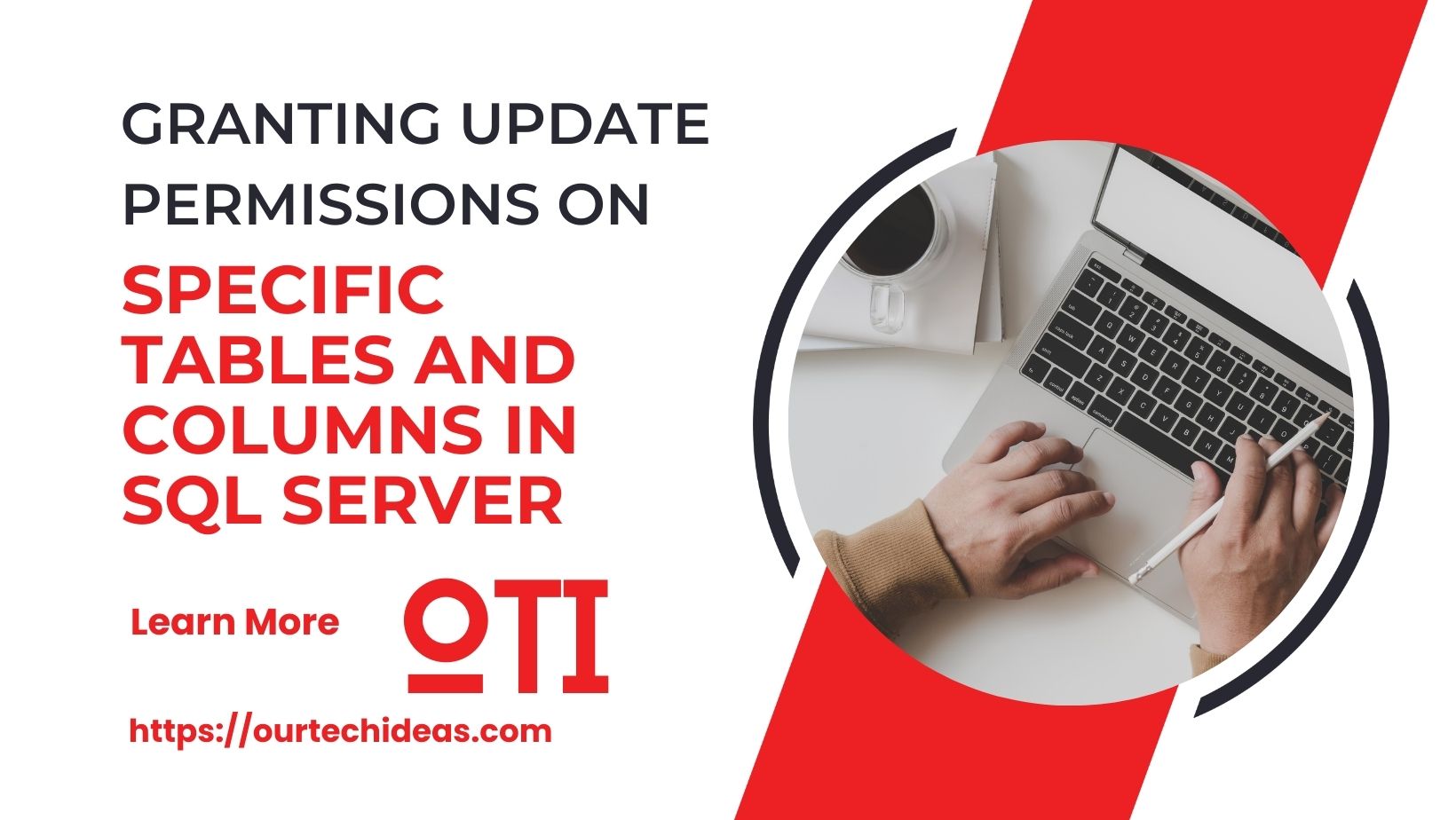Managing database security effectively is a critical aspect of ensuring data integrity and controlling user access. In SQL Server, administrators often need to provide precise permissions to users, enabling them to perform specific actions on selected tables and columns without granting broader access. This blog will guide you through the process of granting UPDATE rights on selective tables and columns in SQL Server.
Why Grant Selective Permissions?
Granular permissions ensure that users have access only to the data they need to perform their tasks, reducing the risk of accidental or intentional data corruption. By granting selective permissions:
- Data Integrity is Preserved: Unauthorized modifications are prevented.
- Security Compliance is Ensured: Meets business and regulatory requirements.
- Audit Trails are Simplified: Easier tracking of user actions on specific columns.
Steps to Grant UPDATE Permissions on Selective Columns
1. Understand the GRANT Statement
The GRANT statement in SQL Server allows administrators to provide specific permissions to users or roles. To grant UPDATE rights on selective columns of a table, the syntax is:
GRANT UPDATE (Column1, Column2, ...) ON TableName TO UserOrRole;
2. Example Scenario
Suppose you manage a database for an e-commerce application, and a user named JohnDoe requires permission to update only the Price and Stock columns in the Products table. Follow these steps:
Grant UPDATE Permission:
GRANT UPDATE (Price, Stock) ON Products TO JohnDoe;
This command allows JohnDoe to modify the Price and Stock columns but restricts updates to other columns in the Products table.
3. Verify Permissions
To confirm that the permissions were applied correctly, query the system views in SQL Server:
SELECT
dp.name AS UserName,
o.name AS ObjectName,
p.permission_name AS PermissionName,
c.name AS ColumnName
FROM sys.database_permissions p
JOIN sys.database_principals dp ON p.grantee_principal_id = dp.principal_id
JOIN sys.objects o ON p.major_id = o.object_id
LEFT JOIN sys.columns c ON p.major_id = c.object_id AND p.minor_id = c.column_id
WHERE p.permission_name = 'UPDATE';
This query returns a list of users, objects, and columns for which UPDATE permissions have been granted.
4. Revoke or Deny Permissions
There may be instances where you need to revoke or explicitly deny permissions:
- Revoke removes previously granted permissions.
- Deny explicitly prohibits access, overriding any granted permission.
Syntax for REVOKE:
REVOKE UPDATE ON TableName FROM UserOrRole;
Syntax for DENY:
DENY UPDATE (Column1, Column2) ON TableName TO UserOrRole;
Example:
To revoke all UPDATE permissions for JohnDoe on the Products table:
REVOKE UPDATE ON Products FROM JohnDoe;
To explicitly deny updates to the Price column:
DENY UPDATE (Price) ON Products TO JohnDoe;
5. Testing Permissions
To ensure that permissions are configured as intended, log in as the user and attempt updates on the specified columns. For instance, a query like:
UPDATE Products SET Price = 100 WHERE ProductID = 1;
Should succeed if the user has permission to update the Price column. However, an attempt to update a restricted column should result in an error:
UPDATE Products SET ProductName = 'NewName' WHERE ProductID = 1;
6. Audit and Monitoring
Regularly audit user permissions to ensure compliance and detect any unauthorized access. Use the system views or SQL Server Audit to monitor updates:
SELECT * FROM sys.fn_get_audit_file('path_to_audit_file', DEFAULT, DEFAULT);
Best Practices for Granting Permissions
- Use Roles Instead of Individual Users: Assign permissions to roles, then add users to roles for easier management.
- Follow the Principle of Least Privilege: Grant only the minimum permissions necessary.
- Document Permissions: Maintain a record of who has access to which columns and why.
- Use Explicit DENY for Sensitive Data: For critical columns, explicitly deny access to prevent unauthorized updates.
Conclusion
Granting UPDATE permissions on specific tables and columns in SQL Server is a powerful way to enforce data security while providing users with the necessary access to perform their duties. By following the steps and best practices outlined in this blog, you can achieve a well-secured and compliant database environment.
For more such tech insights and tutorials, stay tuned to Our Tech Ideas.




